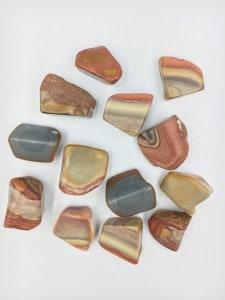Traditional Tadelakt
Traditional Tadelakt (as well as all lime plasters) were applied directly to solid masonry or a wood lathe structure. They would achieve adhesion thru the suction action of the water from the plaster into the masonry or plaster/lathe substrate it was applied onto. These days cement and gypsum board surfaces do not offer the ability for the suction of water to adhere/bond to the Tadelakt. So the most common method to overcome the lack of suction onto modern materials is to use a “glue” of sorts, either in the mix, or as a primer.
Some manufacturers of these “lime” plasters/Tadelakt will advertise that they contain a plant based binder. The plant based binder is usually a methyl cellulose, xathan gum or diutan gum. None of which are natural nor would I recommend as an ingredient in a natural plaster. This means that the plaster they sell has lime as a filler or additive. The lime is not the actual binder.
I personally believe it is unethical to advertise a plaster as a “lime” plaster when the binder is actually not lime at all. For example ethanol is a plant based fuel but I don’t think people want ethanol in their home. I think it would be more honest to advertise the product as methyl cellulose plaster that happens to have lime as a filler.
Application of Traditional Tadelakt
For your application, using our Lime Putty Finish Plaster on cement board. First, make certain that the cement board has more than adequate framing behind. Make absolutely certain that the cement board cannot flex. Tape all the joints in the cement board using fiberglass tape and thin set. Just like you would for under ceramic tile. Then skim coat all the cement board using a rough tile thin set material. Go over the thin set material before it sets using a rough sponge or wooden float. This is to open up the pores and rough the surface. The open pores and rough surface give the Tadelakt a surface that will allow adhesion. This surface uses both the roughness (for a “key”) and the porosity for its adhesion.
You will then apply one coat of Lime Putty Finish Plaster, the exact type of trowel used to actually apply the Tadelakt is not as important as long as it is smooth and flat. After it has been applied finish as follows:
Apply the “Savonite” (black soap and carnauba wax sealer) with a hand held sprayer. Compress and polish with a very hard smooth stone as it is setting. Do not wait until it is set! It is a combination of applying the black soap, carnauba wax, and compressing/burnishing with the stone before the plaster has dried that gives the Tadelakt the smooth waterproof finish. I would highly recommend doing a complete practice mock-up of the entire process on a scrap of cement board. This will get you familiar with the complete process. The mock-up process is where you can experiment with adding pigments to determine the best color for your project.
 Using 100% natural products is a fun centuries old adventure! There is not really a wrong way to do it, unless it fails or you don’t like it. Our commitment, at Lancaster Lime Works is to only use all natural materials. And to assist in your lime plaster success!
Using 100% natural products is a fun centuries old adventure! There is not really a wrong way to do it, unless it fails or you don’t like it. Our commitment, at Lancaster Lime Works is to only use all natural materials. And to assist in your lime plaster success!

For the thinset material is there anything that needs to be considered when choosing the product?
Our customers have had good success with multiple products as the thin set base. We always recommend doing a couple samples before tackling the entire project. Usually an unmodified thin set works very well. Good question!
[…] one exception to keeping things simple is my enduring love for tadelakt, which is a lime plaster prepared and combined with olive oil soap that – I promise I’m […]
Great article, can’t wait to come meet you guys in person! Your passion of using natural products in building aligns with what I would love to offer more of to my customers!